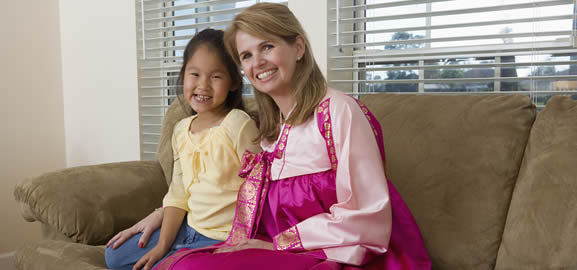The Origin of China's Orphans

China's "one child" policy is infamous in the Western world. Introduced in 1979 as a short-term measure, it was originally intended to help the Chinese work towards a voluntary small-family culture. The regulation was only strictly enforced with a minority of the population, mainly urban-dwellers and government officials. In specific situations -- if the first child was a girl or disabled, or the family lived in a severely under-populated area -- the policy could be relaxed to allow a second or even third child after an approved number of years had passed.
The policy resulted in a deep decline of female births. Sex-selective abortion is illegal in China, but often a female pregnancy would later be reported as "lost." Some experts suspected these births were simply going unregistered, with investigative studies showing as many as 22% of girls in small villages living without registration. However, the number of female "foundlings" -- newborns abandoned in public places where they would be quickly discovered and taken to orphanages -- began to skyrocket. These foundlings are sometimes physically or mentally handicapped boys, but overwhelmingly the abandoned children are unwanted, but otherwise healthy, girls.
Aside from the subsequent societal gender imbalance -- resulting in an increase in the kidnapping of women, the sex trade, and even polyandry (one woman being married to more than man, usually brothers) -- those thousands of orphaned girls would soon have a unique place in modern society. Many of them were placed in foundling houses, where a kind of unorthodox family dynamic would evolve and the heads of the houses (often women) would attempt to keep all their girls, creating a cohesive unit. But most of these children went up for adoption on the world market. Considering that China's adoption procedure was, in comparison to many other countries, both fairly simple and clearly organized, the world began to take notice.
The Rising Popularity of Adopting From China
Although many Western countries were intrigued by the idea of adopting Chinese children, there a special interest in the United States. Unlike many wealthy Western countries, such as England, prospective American parents are only required to follow the adoption procedures of the country the child was born in, with no additional red tape from their own government. In 2006, China Daily reported that every four out of five children adopted from China were placed with families in the United States.
Consequently a strong community support system has taken root in the USA. Hundreds of online websites, complete with active forums, concern themselves solely with parents who have adopted from China or those who plan to in the future. Offline, local chapters of Families with Children from China (an international organization otherwise known as the FCC) formed in targeted areas of the United States. Adopting from China became so popular that groups of Americans would fly together to cities such as Guangzhou or Changsha, staying for several days in upscale hotels as they finalized the adoption process, according to the New York Times. Many claim they have a "red thread connection" -- referring to a Chinese saying of the red thread of destiny that connects fated lovers. Western adoptive parents have adapted this concept to their own situations, believing destiny also led them to their new daughters.
Read on for Chinese Daughters of the West: A New Aspect Of Modern Culture



Recommend this article